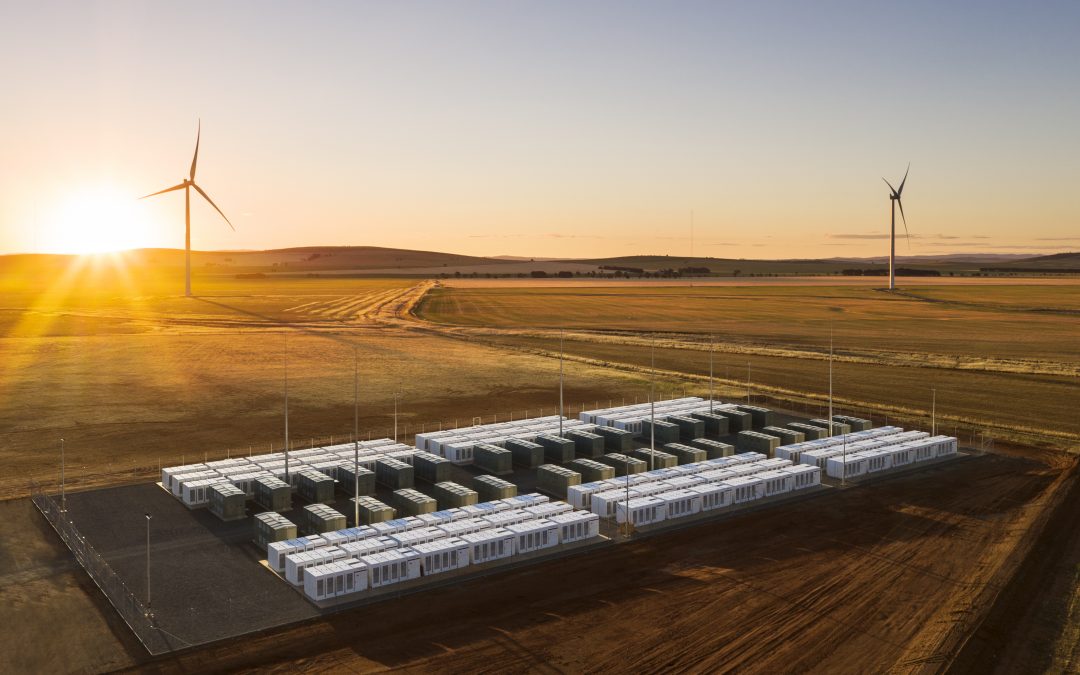The expansion of the world’s largest operating battery has been greenlit by the local regulator in South Australia, paving the way for testing to begin soon. The upgraded Hornsdale Power Reserve, also known as the Tesla Big Battery, is readying to assume the role of a major grid asset and make history as the first battery in the National Electricity Market (NEM) to provide both grid-scale inertia services and Frequency Control Ancillary Services (FCAS).
The approval announced on Thursday by the Essential Services Commission Commission of South Australia allows the Hornsdale Power Reserve to vary its electricity generation license in line with its increased size. The capacity of the 100MW/129MWh battery storage system is being expanded by 50%, through the addition of 50MW/64.5 MWh of Tesla batteries.
Following a round of public consultation and no submissions received from stakeholders, the Commission “assessed Hornsdale Power Reserve Pty Ltd’s application for an electricity generation licence against the relevant provisions of the Electricity Act 1996 and the Essential Services Commission Act 2002 and determined that all relevant criteria under those Acts have been satisfied”. “It has therefore approved the application,” the Commission said in a release.
After the installation of battery components had been finalized in March, owner Neoen announced in April that network connection works on the project had been completed. Having attracted an $8 million Australian Renewable Energy Agency (ARENA) grant, $15 million in state funding, and $50 million in project financing from the Clean Energy Finance Corporation (CEFC), Neoen said it expected to complete the $71 million battery expansion before mid-year.
The 100MW/129MWh Tesla big battery, located in Jamestown in SA and adjacent to the 315 MW Hornsdale Wind Farm, has already demonstrated its immense value for the grid in a number of ways, largely through grid stabilization services and savings. In its first year of operation alone, it has brought down grid stabilization costs by some $40 million, according to consultants Aurecon.
Most recently, the Tesla big battery delivered a five-fold increase in Neoen’s storage revenue in the first quarter of 2020. Alongside the other two big batteries in SA – Dalrymple ESCRI and Lake Bonney – the Hornsdale played a critical role in maintaining the grid’s reliability and keeping electricity costs down for consumers after a tornado in late January pulled down the Heywood interconnector between SA and Victoria, leaving SA islanded from the rest of the Australian grid for 18 days.
The Tesla big battery is now set to become an even more valuable asset to the NEM through the addition of digital inertia services. The expanded 150 MW system will be upgraded with Tesla’s Virtual Machine Mode, which allows the advanced power inverters, or so-called grid-forming inverters, to emulate the existing inertia services being supplied by a fleet of fossil fuel power plants. It will test and demonstrate the capability of battery control systems to provide digital inertia replacing the mechanical inertia traditionally provided by synchronous generators while reducing the current curtailment of solar PV and wind generation in South Australia.
This content is protected by copyright and may not be reused. If you want to cooperate with us and would like to reuse some of our content, please contact: editors@pv-magazine.com.









2 comments
By submitting this form you agree to pv magazine using your data for the purposes of publishing your comment.
Your personal data will only be disclosed or otherwise transmitted to third parties for the purposes of spam filtering or if this is necessary for technical maintenance of the website. Any other transfer to third parties will not take place unless this is justified on the basis of applicable data protection regulations or if pv magazine is legally obliged to do so.
You may revoke this consent at any time with effect for the future, in which case your personal data will be deleted immediately. Otherwise, your data will be deleted if pv magazine has processed your request or the purpose of data storage is fulfilled.
Further information on data privacy can be found in our Data Protection Policy.